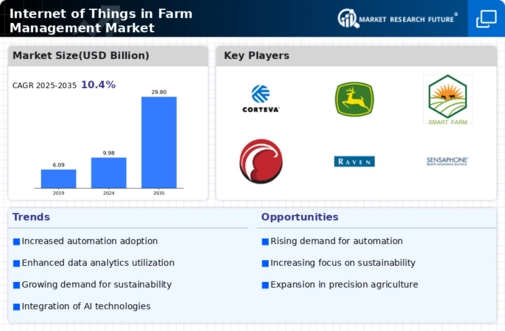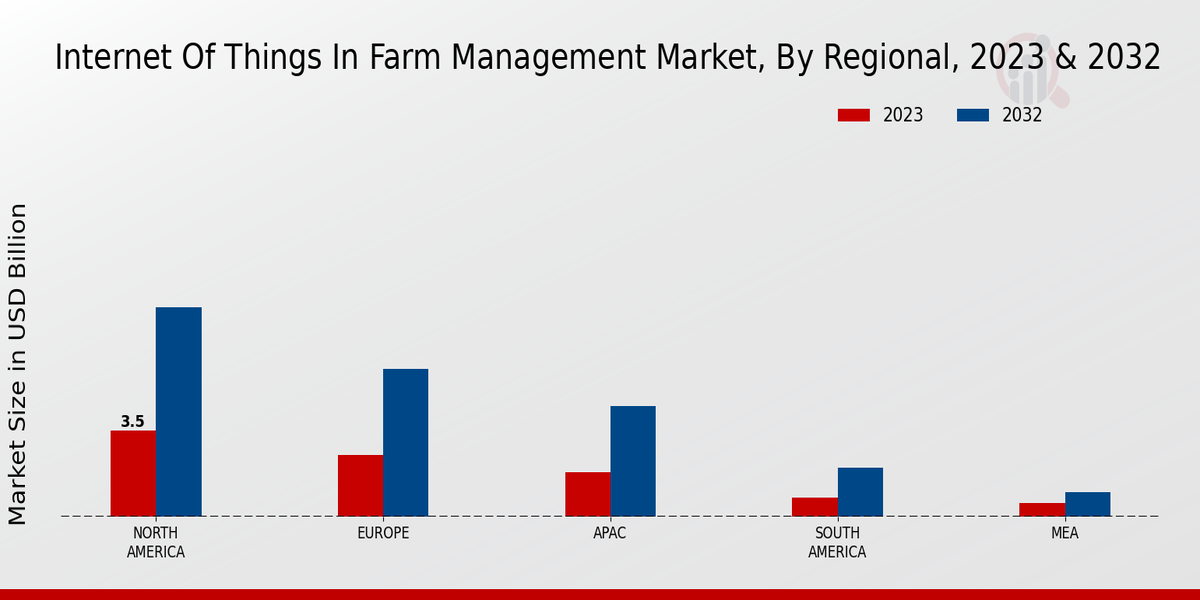The Internet of Things in Farm Management Market is witnessing a transformative shift driven by technological advancements that integrate IoT solutions into agricultural practices. This burgeoning market is characterized by an increasing demand for smart farming technologies that enhance operational efficiency, decision-making processes, and crop yield.
Companies are leveraging IoT devices and platforms to gather real-time data, analyze environmental conditions, and optimize resource utilization. The competitive landscape is marked by innovation, collaboration, and strategic partnerships as stakeholders aim to address the challenges faced by farmers, such as sustainability, labor shortages, and the need for precision agriculture.
Key players in the market are differentiating themselves by offering comprehensive solutions that cater to various aspects of farm management, thus driving competition and growth.
Corteva Agriscience plays a significant role in the Internet of Things in Farm Management Market by harnessing advanced digital solutions to enhance agricultural productivity. The company is recognized for its strong investment in research and development, which empowers farmers with effective tools and insights for smarter farming.
Corteva's strengths lie in its ability to integrate precision agriculture with IoT technology, providing innovative solutions that encompass crop protection, nutrient management, and software tools designed to analyze farm data effectively.
Their commitment to sustainable agriculture aligns with the growing consumer demand for eco-friendly products, and their extensive reach allows them to cater to diverse agricultural needs while enhancing the overall efficiency of farming operations.
John Deere, a prominent player in the Internet of Things in Farm Management Market, is known for its pioneering efforts in incorporating IoT technologies into agricultural machinery and equipment. The company has established a strong market presence through its advanced telemetry solutions and smart farming innovations that improve operational efficiency for farmers.
John Deere's strengths are rooted in its robust portfolio of connected machines, which offer real-time data analytics and insights to optimize farming practices. The company's focus on seeding, crop care, and harvest technologies, combined with its commitment to precision agriculture, positions it as a leader in enabling farmers to make data-driven decisions.
By continuously evolving its IoT capabilities and expanding its product offerings, John Deere is helping reshape the future of farm management with a strong emphasis on sustainability and productivity.




















